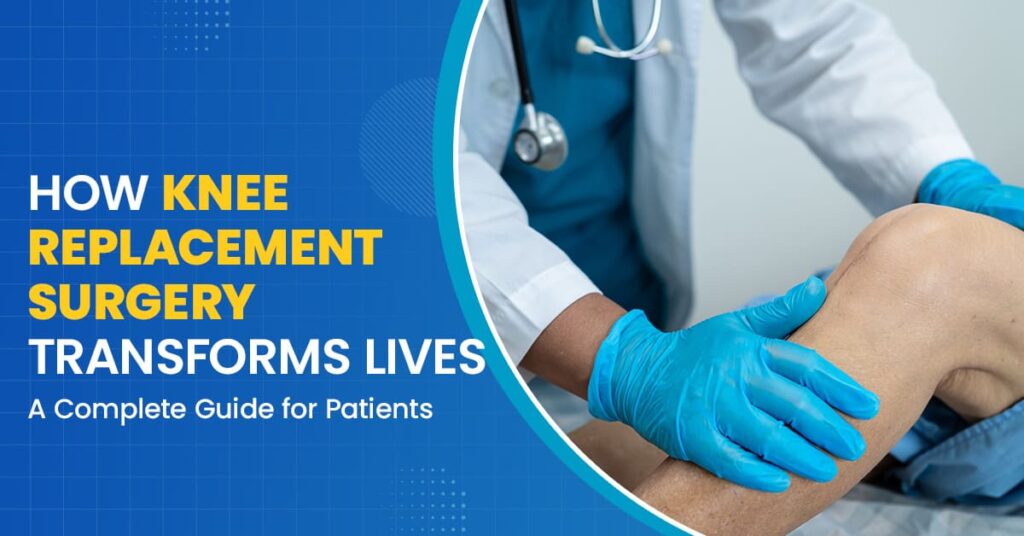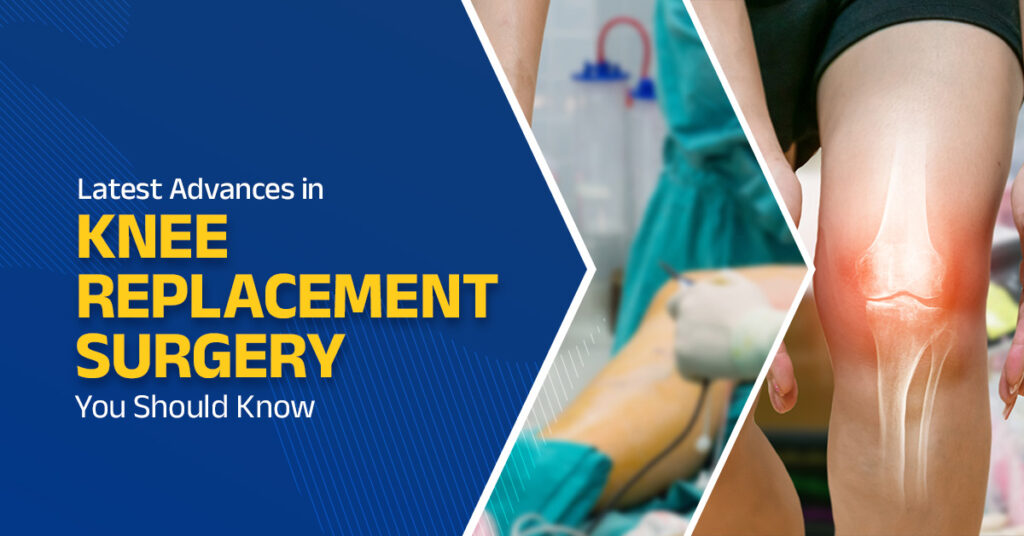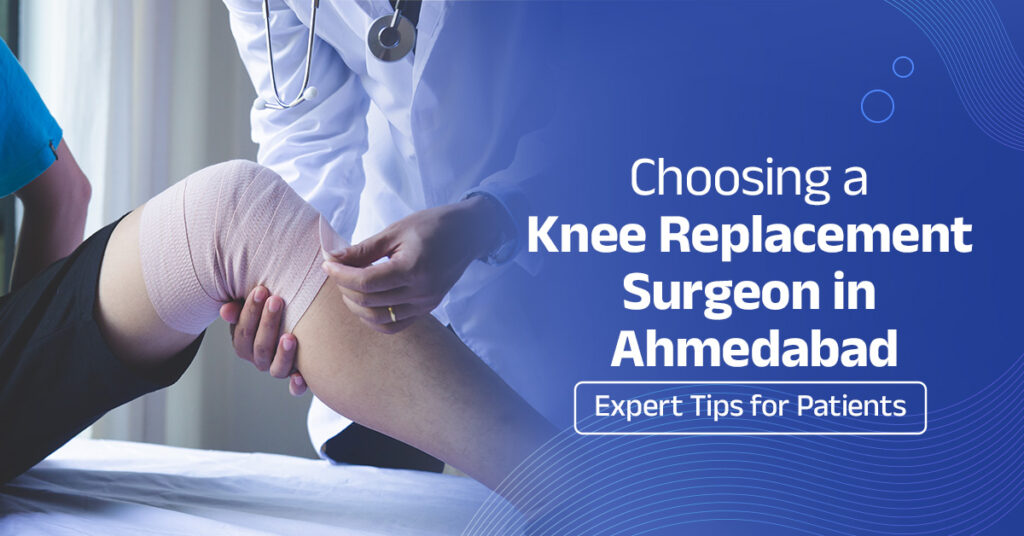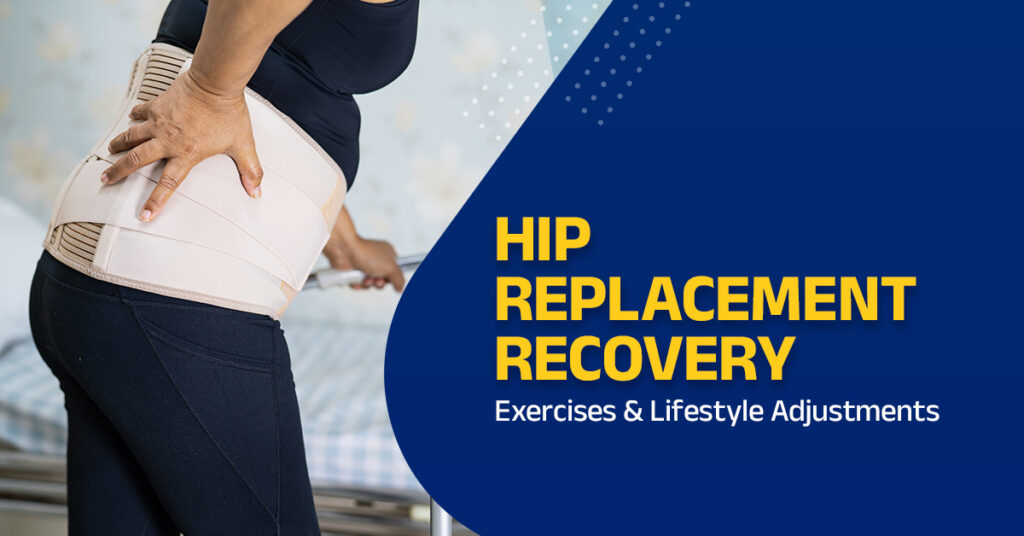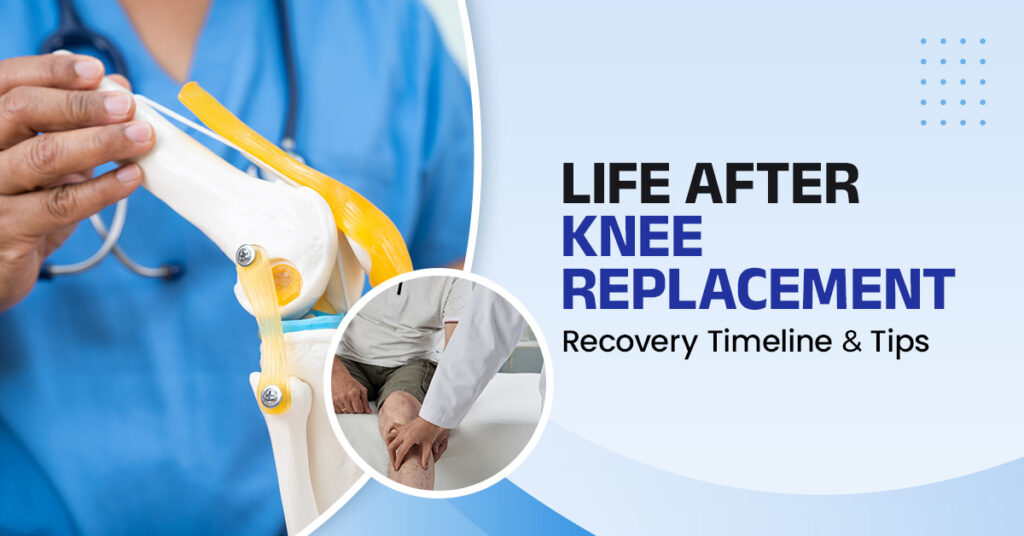How Knee Replacement Surgery Transforms Lives: A Complete Guide for Patients
Knee issues can gradually take over your daily routine. When non-surgical options fail, knee replacement surgery offers a chance to regain independence and confidence, and to improve your quality of life. This guide covers all that a patient needs to know. From the details of the procedure to recovery and life post-surgery, we have included it all, which helps make informed decisions with confidence. Understanding Knee Pain and the Need for Knee Replacement Surgery Chronic knee pain tends to develop slowly. It may start as stiffness or discomfort after an episode of activity. As time goes on, the pain becomes constant, and it limits daily activities. Many patients are initially suggested lifestyle changes. These include weight management, exercise, pain-relief medication, and physiotherapy. While they may be helpful in the early stages, they tend to fail as joint damage advances. When pain from your condition is affecting your sleep, walking, or doing everyday tasks, in that case, you should consult with a Knee Replacement Surgeon. The procedure not only provides pain relief but also improves your range of motion, balance, and, in turn, your confidence. For many, it is the start of a more active and independent life. Key Signs You May Need for Knee Replacement Surgery Sure signs suggest that surgery may be required. Prolonged knee pain that does not improve with rest is a standard indicator. Also, Joint swelling and stiffness tend to get worse over time. Reduced range of motion is also a warning sign. Patients may have trouble fully extending or flexing the knee. Daily activities, such as climbing stairs or standing up, become challenging. Knee pain affects emotional health. As mobility declines, patients may become frustrated and dependent on others for even basic daily activities. Health issues like osteoarthritis, rheumatoid arthritis, or severe knee injury are common causes for choosing Knee Replacement Surgery. A doctor reviews the patient’s symptoms, X-rays, and lifestyle factors before recommending surgery. Step-by-Step Process of Knee Replacement Surgery The process starts with a detailed evaluation. Doctors review medical history, physical condition, and imaging results. Also included are blood tests and fitness assessments. Before the operation, patients are given information on which medications to take, which exercises to do, and dietary changes. This prepares them for better surgical results and faster recovery. During knee surgery, we remove the damaged joint components. We then place artificial implants, which, in turn, restore joint alignment and motion. The procedure usually takes a few hours. After surgery, patients are closely monitored. We see that pain management, wound care, and early movement are started right away. This is the key stage for successful recovery. Recovery Timeline After Knee Replacement Surgery Recovery is in the hospital. Most patients are there for a few days. Within 24 hours, many seem to be walking with support. In the early stages of recovery, we ensure the patient performs gentle movements and basic exercises. We also offer physical therapy to improve strength and flexibility. As time goes by, we see patients’ walking distance and joint movement improve. Within the first few weeks, many patients return to perform light daily activities, with full recovery, which may take from a few to many months. The patient’s recovery progress depends on age, health, and the degree of commitment to therapy. Long-term recovery aims to improve mobility and reduce pain, with regular exercise and follow-up care playing key roles in sustaining these benefits for many years. Benefits of Knee Replacement Surgery for Patients The most significant benefit is in pain relief. Many patients see significant improvement within weeks. Mobility has improved. We see that walking, standing, and climbing stairs is much easier. Also, there is a report of greater independence and confidence. Knee Reconstructive Surgery improves quality of life. Patients return to hobbies, social activities, and travel. We see very long-term results and worldwide high patient satisfaction. In modern surgery, we see greater predictability and reliability. Life After Knee Replacement Surgery Returning to a routine is a gradual process. Many patients get back to the office in a few weeks. As for very physical tasks, it may take longer. Certain high-impact physical activities to avoid. Things that you like running or jumping, stay away from those. As for low-impact exercises like walking, swimming, and cycling, they are encouraged. Maintaining knee health is key. Through regular exercise, achieving and maintaining a healthy weight, and scheduling follow-up visits are essential. With proper care, patients may see many years of better mobility. Long-Term Outcomes and Implant Longevity Modern knee replacements are for long-term use. Most do well for 15 to 20 years or more. Long in large part to what you do, your weight, and how well you care for your joints. Also, if you follow the medical advice given to you, your implant’s lifespan will be extended. Improvements in materials science and surgical techniques are reflected in patient care. Many patients do not require revision surgery. Choosing the Right Hospital and Surgeon Choosing a health care provider is very important. Accredited hospitals that follow strict safety protocols are a plus. Surgeons who perform many procedures usually do better. Patient feedback and outcomes report what we need to hear—open communication and shared decision-making foster trust and confidence. Patients should feel comfortable discussing expectations, risks, and recovery from knee replacement surgery in Ahmedabad. Dr Saurin Shah performs the Knee Replacement procedure with the International standard care and strict medical protocols for a faster recovery. Book your appointment today! Conclusion Knee Reconstruction Surgery changes lives by decreasing pain and restoring mobility. It enables patients to get back to their daily routines and enjoy life. Consulting a specialist with experience in the field ensures the right treatment plan. With the proper preparation and care, the surgery provides long-term benefits. For people with chronic knee pain, joint replacement surgery may be a step toward a healthier, more active life.

